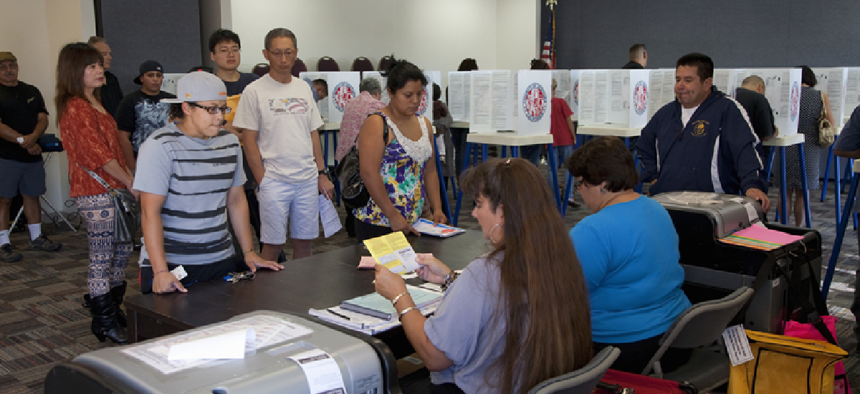Report: States slow to retire old voting tech

States have made some progress getting rid of older and paperless voting machines, but the nation's security concerns in 2020 could still look a lot like 2016.

States have made some progress getting rid of older and paperless voting machines, but the nation's voting infrastructure as a whole will likely experience many of the same concerns over security vulnerabilities in 2020 that they faced in 2016, according to a new report by the Brennan Center for Justice.
According to a survey of purchasing intentions by states and local jurisdictions, paper ballots and post-election audits appear to have gained broad support among election officials. However, available funding remains the biggest current obstacle, and many say they don't have the money needed to replace their machines in a timely fashion.
Local election officials in 257 jurisdictions and 37 states said they plan to purchase new voting equipment in the near future and 121 jurisdictions said such replacements must happen before the 2020 election. Two-thirds of election officials surveyed said they lacked the necessary funds to make those replacements, even after the federal funding received last year.
While newer voting machines aren't automatically more secure, machines a decade or older are more likely to have higher maintenance costs, rely on hard to find parts and run software that is no longer patched or maintained by vendors.
"Older equipment in general doesn't benefit from the last decade or two or security improvements," Alex Halderman, professor of computer science at the University of Michigan and an expert in election security, told the House Appropriations Committee at a Feb. 27 hearing.
The Brennan Center has released two previous versions of the report in 2015 and 2018, but this is the first iteration published after Congress made $380 million in federal grant funding available to states for voting and election system upgrades. While a third of those funds have been set aside to purchase newer voting machines, states have five years to actually spend their portion, and some may be waiting for new federal voluntary voting system standards to be put in place first.
Additionally, states have complained those funds represent a drop in the bucket compared to what is needed, and estimates for the total amount required to wean the country off paperless voting machines entirely range from $1 billion to $1.5 billion.
However, simply purchasing newer machines won't automatically mean states and jurisdictions are secure.
"Things have gotten better in security in general, but we still don't know how to make a machine that's absolutely hack proof," Halderman said. "That's why we need this other layer of defense that comes from having a paper trail, paper ballots, and going back and spot checking them to make sure the result is right."
During the 2016 elections, 14 states used paperless voting machines that experts say can't be effectively audited, in at least some counties and jurisdictions, with five using them statewide. Since then, Virginia and Arkansas have moved to replace their voting machines with newer models that have some form of paper backup.
Nine of the the remaining 12 states told the center they hoped to buy new machines with paper backups. Six of the 12 have either passed legislation or taken executive action to move their systems towards paper-based machines.
Not every jurisdiction or state is following those recommendations.
"Despite the recent attention to election security, and repeated warnings by security experts that voting machines should have a voter-verified paper backup, several counties in Texas have purchased machines without a paper trail since 2016," the report noted.
NEXT STORY: FCW Insider: March 5





